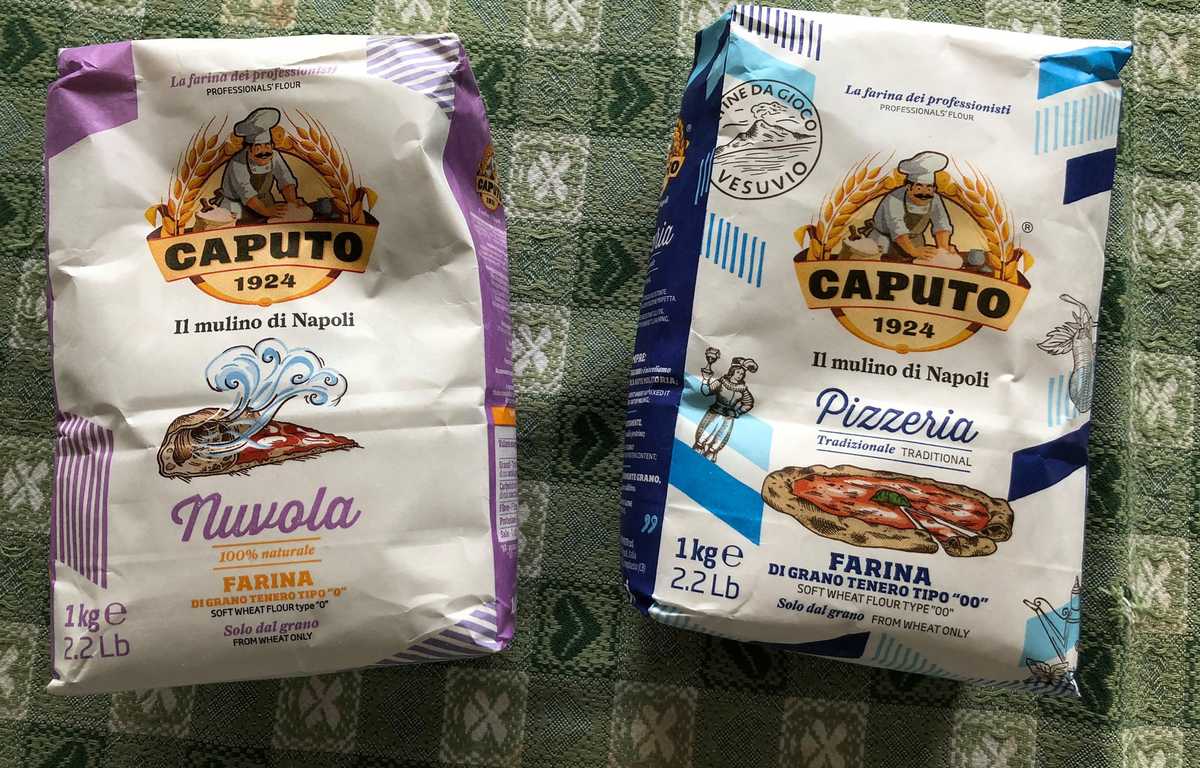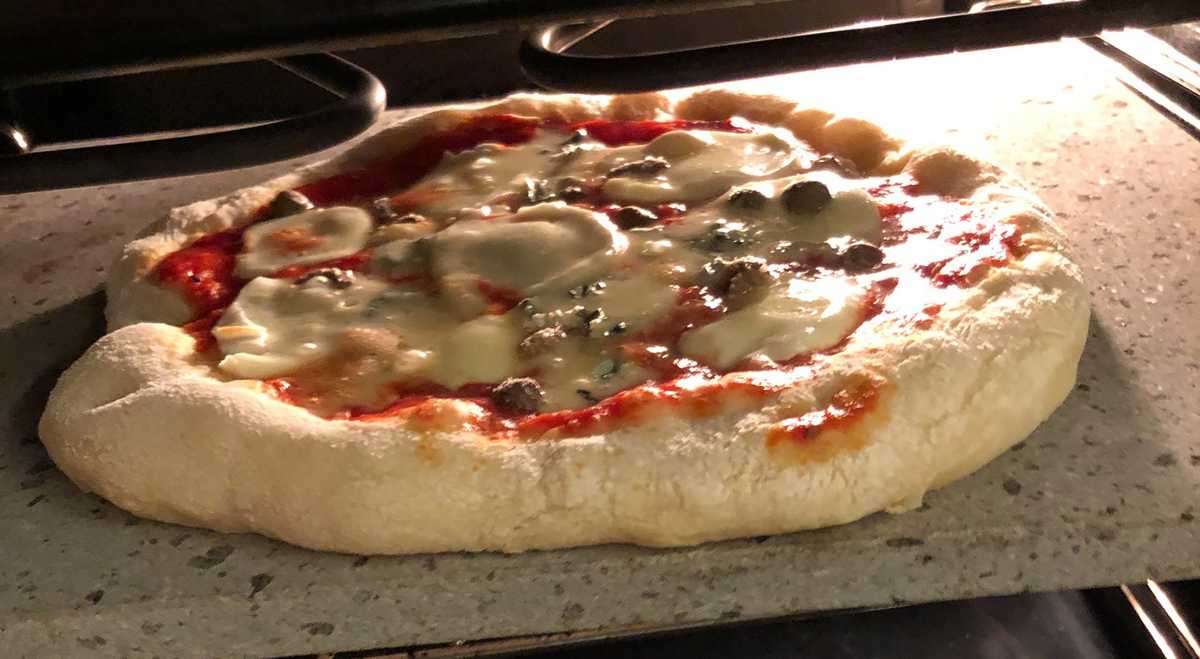May 23, 2021

On Pizza
In the past months, I've been training myself in the craft of pizza baking, trying to achieve the objective of consistently producing pizza that is both good and doesn't look like someone barfed on the table in spite.
I was like pizza is salt, yeast, flour, and water, right? They make it in Naples for chrissakes, probably daily! How hard can it be?
Well, turns out that pizza baking is not rocket science, it's much worse!
So, young folks, gather around and follow me through the rabbit hole of the dos and don'ts of pizza crafting. May my experience be a guiding light for your attempts at cracking the riddle!
A word of warning. This is not a success story like that time when I completely eradicated snoring from the face of Earth -- by the way where is my Nobel, you cowards?
No, this is a story of failure, of botched attempts, of diminishing returns, of unmet expectations. In short, this is a story of Life.
Le Yeast
Let's start with yeast. I don't get yeast. I've read a lot about how yeast works, and it makes no sense to me.
Why should I limit the amount of yeast to make the dough rise more? Why can't I just throw more yeast at the problem?
Now, when I don't understand something, I always suspect that there are factors that act on a quantum scale. Maybe someone should investigate.
In the end, I just purchase the most expensive yeast and let it do its job no questions asked.
Sometimes it works. Sometimes it doesn't. And you only find out when you open the container at the end of the rise period. I told you it was a quantum thing!
Le Mozzarella
When it comes to mozzarella, this is a battle with no winners. My main rule is if while chewing it, you hear the sound of a rocking chair, that's not ok mozzarella. I usually end up with either of these two.
Of course, if you were in Naples, you'd have access to some god-tier, bonkers delicious, Stendhal syndrome-inducing mozzarella. But then again, you'd be in Naples, so careful what you wish for.
Le Tomato
Let's introduce Tomato sauce. I think you want to go with Mutti, and among the many variants, this is my favorite.
Why? Well, if you squint your eyes, you can notice the word pizza on the label.
For this and other invaluable advice: paypal.me/gianlucabelvisi
Le Flour
And for the pièce de résistance, let's tackle flour. I don't want to go all fascist on you, but foreigners are terrible!
I'm kidding. Foreigners are fine. But you shouldn't save money on flour is what I'm saying, because I looked into it and found out that flour is full of carbs!
You need to aim at the best flour, with good fibers, proteins and that doesn't, like, contain bleach. In short, you need Italian flour!
This is not to say that Italians are always right about this. There was this craze a few years back about Kamut flour that was just a well-executed marketing operation.
Or you have these flour talebans all fluffery about ancient grains. It's probably bullcrap, but those flours are still an order of magnitude better than you can find outside the boot.
Me? I go with Caputo. Sometimes I choose 00. Sometimes I venture with 0. And when I'm really feeling it, I mix them. I have literally no idea what I'm doing.
Le capperi
At the risk of sounding an elitist fuck, you need capers in your pizza.
And for the best ones, you need to go to Pantelleria the same way you'd go to Bronte for the best pistachios or to La Spezia for... I'm sure they have something.
Le assemblage
Ok let's put these things together. Of course, doses are fundamental. Here are mine, after trying so many:
- Flour: 160gr
- Water: 105ml
- Salt: 4gr
- Yeast: 1gr fresh or 11gr dried, for an 8 hour rise time
- Sugar: 5gr (this is needed to wake up the yeast and gives the dough a nice burnt color, thank you Francesca Paganelli for the hint)
A bit of advice on the doses that might seem too specific but still: don't put the doses that you gathered from different Neapolitan sources on post-its next to each other, because you might mix them and end up with an unworkable dough.
Like, look at this mess
The only silver lining is that I managed to recreate an iconic scene from the 1997 animated movie The End of Evangelion.
Le baking
Ok, this is all fun and games, but now let's mix this stuff together until it resembles a pizza. This is where we reach the dolenti note.
So, pizza really wants to be baked at 450℃, also known as the temperature of the sun, while standard ovens only reach 250℃, which is - checks notes - considerably less.
How can we overcome such a limitation? There are two ways:
Oven Hacking
Ask yourself, how does an oven know that it has to stop creating hellfire at 250℃? Does it have a conscience? No, dummy, there is a sensor!
Ok, so what you want to do is bend the sensor so that it points to the center of the oven, isolate a zone on the top where your pizza is going to bake, which will be significantly higher than 250℃. Probably more like 275℃!
Butt heating
This is the one I usually go for because I'm not into the whole sensor bending thing.
- put the dough on a pan and cook its butt on the stove.
- add tomato and toppings and, once the butt has gained color, move the action to the oven with the grill on and the door opened so that it doesn't turn off. A couple of minutes should be all you need.
Le results
Ok, we are reaching the end of Season 1. Here is a list of outcomes. There is progress, but oh so much failure too, which is ultimately why I have applied for Swedish citizenship 😭
To be continued next year if the pandemic persists, which at this point it's all we are hoping for.




















